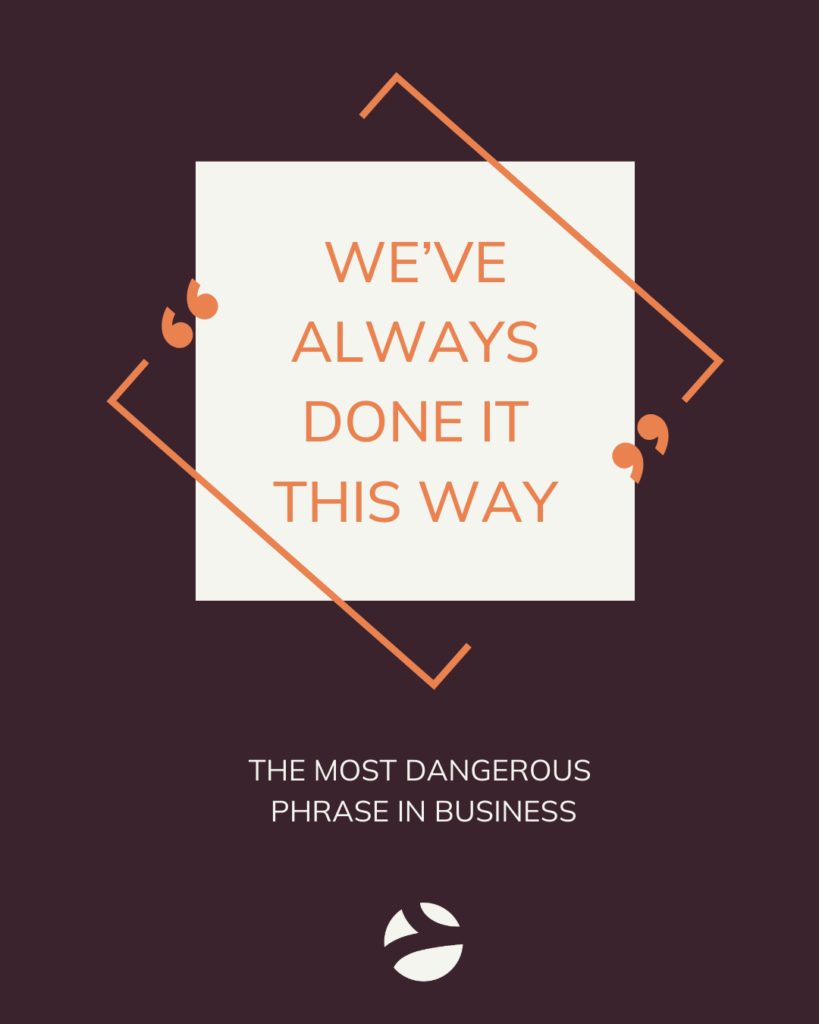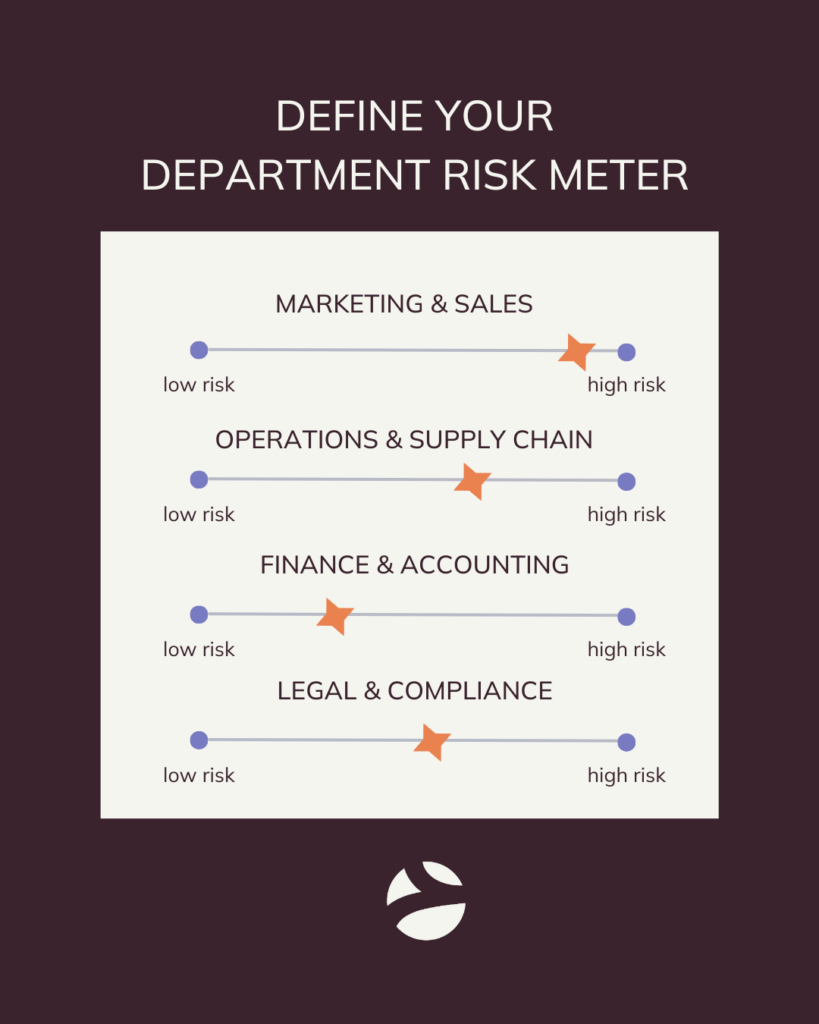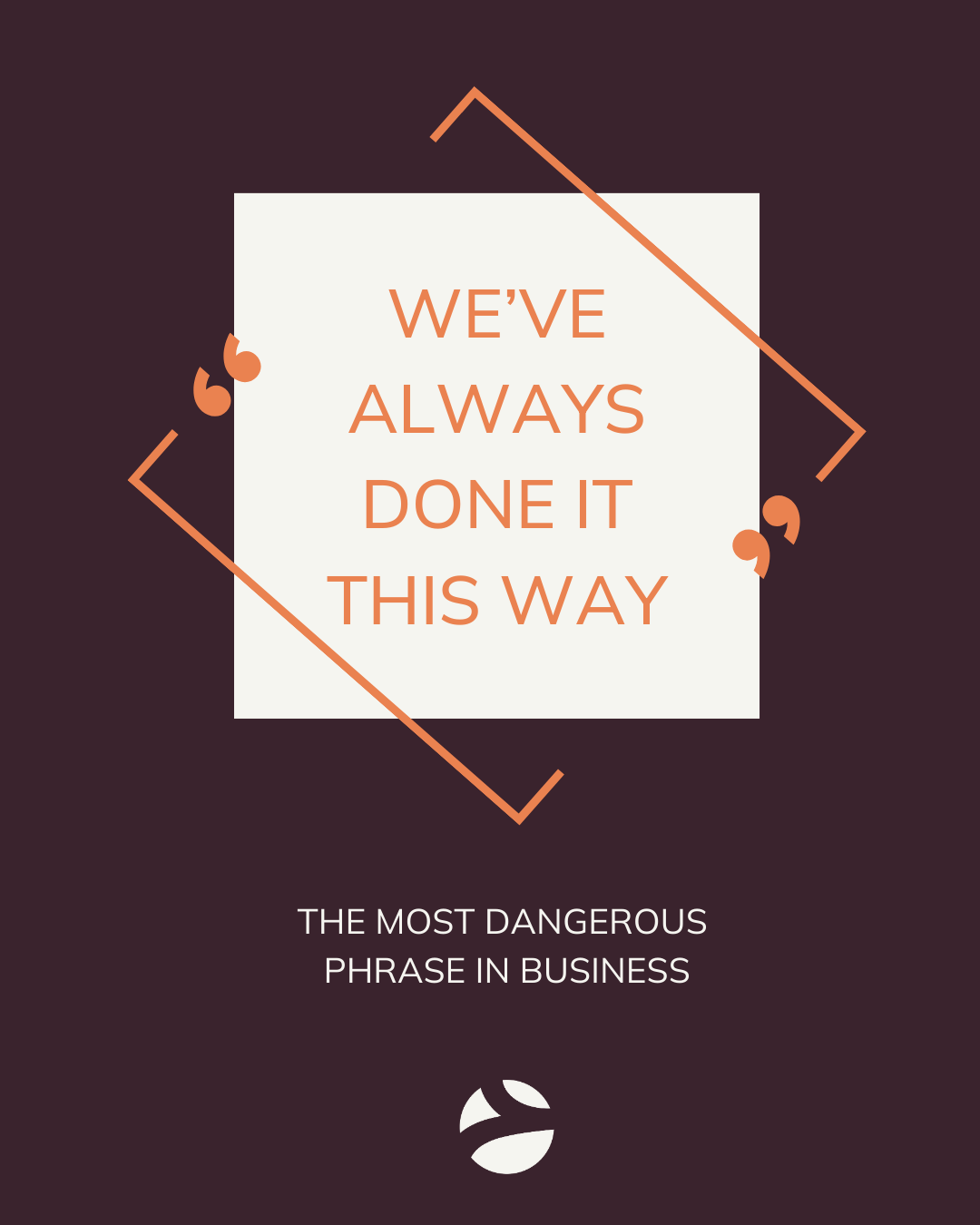WRITTEN BY: KATE MACCABE
Defining a world for risk and decision making across 4 key functions
“We’ve always done it this way.” A phrase dubbed by Forbes as the most dangerous phrase in business.
We’ve come a long way from the hey-day of DTC businesses coming on the scene en force in the 2010’s to the current state of affairs. Supply chain and pandemic challenges in 2020. Massive shifts in marketing capabilities due to device tracking updates in 2021. Market uncertainty caused by inflation, layoffs, and global instability in 2022 and 2023. Today startups and DTC brands are facing a harsh reality to navigate.
It’s not only about thriving anymore. Make sure your organization will survive.
Companies now face the stark reality of “we’ve always done it that way” being a red flag instead of a green one. This new world requires taking risks, trying new approaches and adapting to unexpected factors. It’s imperative for leaders to have a framework on balancing risk with the decisions they make.
At Flywheel Strategy, we see risk as a strategic opportunity. Proactively choose where the business can and should take risks in each department. Marketing & Sales, Operations & Supply Chain, Finance & Accounting, even Legal & Compliance have a spectrum of risk tolerance that is key to shaking off “how we’ve always done it”. Adapt your business to the environment of today and the future. It’s a departure from the “all or none” approach. Instead of accepting all or no risk, 2023 and 2024 require a “some” mentality, with intention behind where your company can and should shake things up.


Here are key opportunities to leverage a “some” risk mentality across your key functions driving the business.
1. Marketing and Sales
- Customer Acquisition: When evaluating risk in customer acquisition, consider where to take new bets (hello, TikTok Shop) and which channels deserve cruise control. Your marketing teams and budgets are likely leaner than they’ve ever before. Ensure your team is focused on exploring rapidly evolving new channels in addition to your legacy channels.
- Brand Reputation: Keep an eye on public relations and social media broadly and position your team to activate quickly. When a new story or trend relevant to your product line takes off, get into the conversation quickly, confidently, and in a way that represents values core to your brand.
2. Operations and Supply Chain
- Supply Chain Resilience: Assess the resilience of your supply chain to external shocks. Diversify suppliers and distribution centers, maintain safety stock, and take action on product quality feedback coming from customers and internal QA checks before it becomes newsworthy.
- Inventory Management: Evaluate risk in terms of overstocked or stocked out items. Partner with digital product and marketing teams to creatively solve inventory offloading through off-cycle promotions and nimble merchandising updates onsite.
3. Finance and Accounting
- Profitability and Margins: Coming into the end of 2023, most budgets have been tightened. The next step is increasing ROI. For the line items on your P&L, find opportunities to gain more (usage, co-marketing opportunities, feature buildouts) from your expenses.
- Budgeting and Forecasting: Evaluate your budget and forecast practices to ensure level of effort from the teams match the variation between budget and actuals. Is your business seeing wild swings month to month and your budget exercises occur annually? Align your rhythms so the budget is working for you instead of being a relic of the past.
4. Legal and Compliance
- Regulatory Compliance: From CCPA to GDPR to TCPA, the alphabet soup of the regulatory landscape can be a burdensome constraint bringing new positioning and features to the market. Create guardrails that provide risk mitigation for the business, without requiring hundreds of hours of redlines and adaptations from your legal team.
- Vendor contract negotiation: Evaluate contractual agreements, such as vendor contracts, lease agreements, and employee contracts, to avoid disputes and financial risks. Look at each contract signing or renewal as an opportunity to strategically adapt the agreement to meet not only the primary need of the business, but also include secondary and tertiary benefits (we’re looking at you, co-marketing opportunities!).
Need support crafting your approach to risk?

BE THE FIRST TO COMMENT: